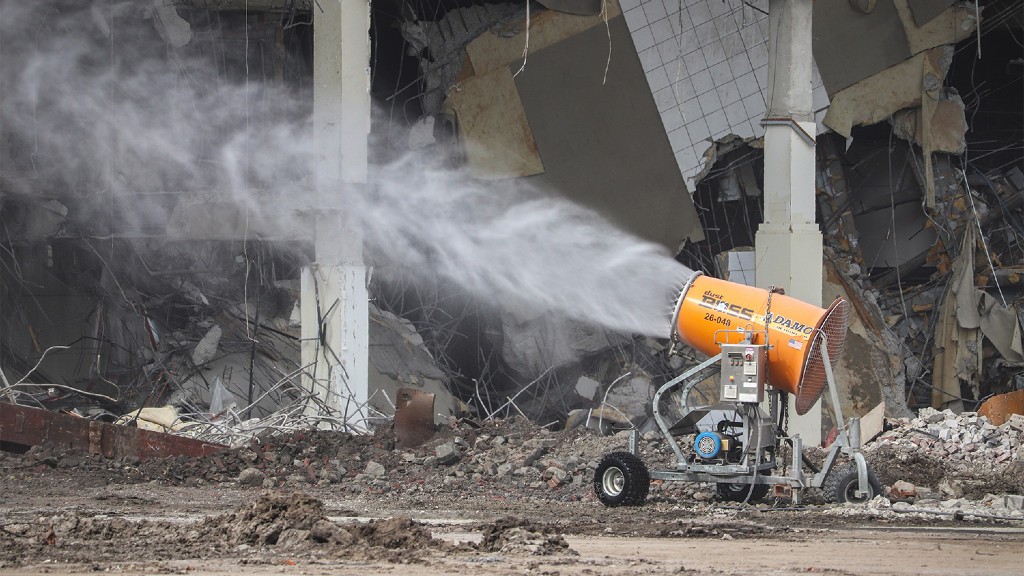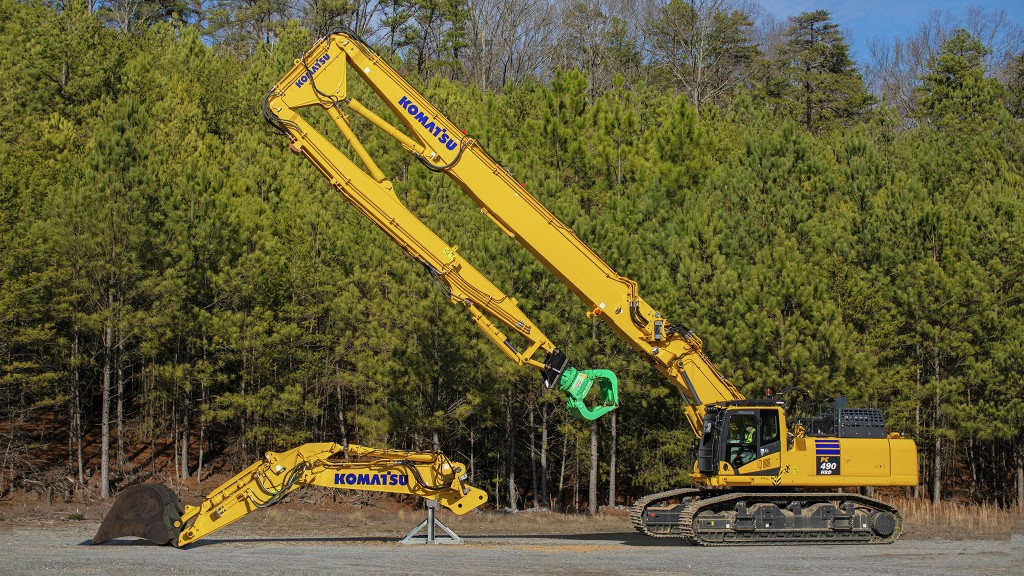
BossTek has helped a demolition contractor control dust emissions from several different material types to stay compliant and improve air quality. When several different types of materials are demolished and separated into recycling or waste piles, they release dust that can be challenging to handle. Working with the Adamo Group on a large mall demolition involving several materials, the DustBoss cannons were used, resulting in zero dust emissions, no complaints, and no costly violations.
The Adamo Group is familiar with the wide variety of materials that can go into construction, and a good example of this was their recent demolition of the Eastland Shopping Center in Harper Woods, Michigan.
"Our business model is to employ the best practices for any project, which includes diligent recycling and effective dust control," said Al Penrod, equipment manager at the Adamo Group.
Opened in 1957, the Eastland Shopping Center was considered one of J.L. Hudson Company's most ambitious department store expansion projects, but occupancy began to wane and the property was sold.
The entire demolition project from start to finish took eight months. Using several pieces of equipment in the fleet, including a mid-sized high-reach crane, front loader, magnetizing machine, and more, the Adamo Group dismantled the structure. An integral part of this was the DustBoss DB-60 misting cannon. Directed toward the activity area, the mist raised the humidity of the area, preventing dust from becoming airborne and travelling into the surrounding community, as well as protecting workers on site from hazardous dust.
A second DB-60 unit was used to reduce dust emissions from separating, piling, short-term storage, and disruption of the piles while filling transport canisters.
"These structures collected over 60 years' worth of dust, so the separated materials can release a lot of emissions," said Penrod. "The DustBoss really helped us control air quality so we could stay compliant."
Controlling demolition dust emissions
To capture small airborne particles, the droplets need to match the general size of the particles so that they can collide. The combined mass causes them to drop to the ground. Droplets greater than 200µm, like those created by hoses or sprinklers, are large enough to cause a slipstream current to move around them, which actually repels smaller particles and leaves them to remain airborne.
Automated mist cannons like the DustBoss DB-60 produce droplets approximately 50-200µm from a misting ring in the front which are propelled long distances by a powerful fan that pushes air through the rugged barrel. The droplets offer both airborne and surface suppression using only a fraction of the water required by hoses or sprinklers.
Mist cannon technology
The two DustBoss DB-60 cannons are BossTek's mid-sized fan-driven designs. Each cannon is 81 inches (2.06 metres) wide, 117 inches (2.97 metres) long, 86 inches (2.19 metres) tall, and weighs 1,800 pounds (816.50 kilograms). Mounted on roadworthy wheeled carriages, the cannons can easily be moved to where they are needed by a pickup or vehicle equipped with a hitch.
The units have an adjustable elevation angle from 0 to 50 degrees, with a throw distance of 200 feet (60 metres) of fine mist propelled in a wide cone by a 25 HP fan running at 30,000 CFM (849.50 CMM). When running with the optional 359 degree oscillation, each one can cover more than 11,600 square metres (125,000 square feet or roughly 2.8 acres), which is more than 21/2 standard American football fields by a single machine.
The cannons are equipped with a 38.10 millimetre cam-and-groove quick disconnect female hose coupling. Connected to municipal hydrants with variable pressure, the DB-60s require only 10PSI (0.69 BAR) of constant pressure. Water passes through an in-line 30 mesh 595-micron filtration system that captures any impurities in the water that might foul the lines. The water then enters a booster pump where the pressure is increased to the adequate level needed for the 30 specially designed nucleating nozzles attached to a brass mandrel to fracture the water into minuscule droplets. The use of a booster pump allows the DustBoss to use a fraction of the water of hoses, only up to 26.7 GPM (101 lpm).
The general rule for demolition dust is to avoid any situation that yields complaints from the public, as complaints regarding air quality submitted to the city or local EPA can trigger an inspection.
The addition of a dust suppression cannon means that the company can have two units on large projects or split them between smaller projects as needed. This ensures that projects can keep operating in adverse conditions where dust may have been a problem in the past.
"Low maintenance is a standout trait for us. We position the unit, it turns on every time, and we walk away," Penrod concluded.



